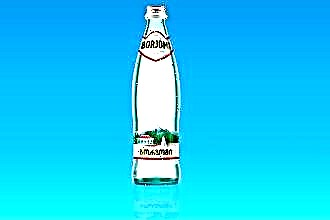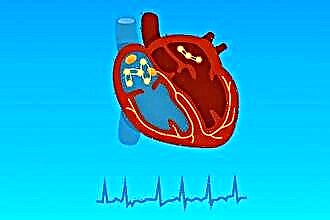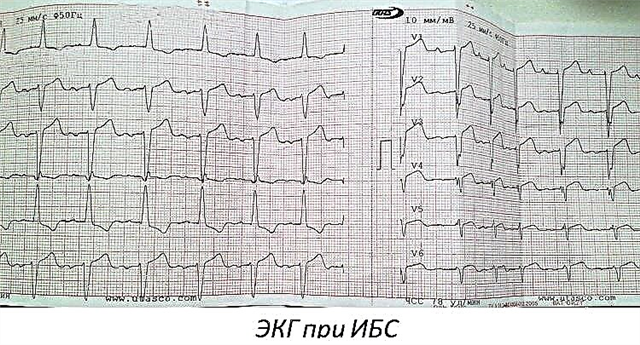Itching in the nasal cavity is a clear sign of irritation of the nasopharyngeal mucosa. Allergens, infectious agents and some endogenous diseases (vegetative-vascular dystonia, vasomotor rhinitis) can cause undesirable reactions in the upper respiratory tract. What to do if there is an itchy nose and sneezing?
 First of all, you need to find out the true cause of the discomfort. This can be done by an ENT doctor after examining the patient and identifying accompanying symptoms.
First of all, you need to find out the true cause of the discomfort. This can be done by an ENT doctor after examining the patient and identifying accompanying symptoms.
In most cases, treatment is limited to the elimination of irritating factors and the use of local drugs that have antiallergic, antiphlogistic and decongestant effects.
Causes of itchy nose
Itching in the nose and sneezing occur as a result of irritation of the nerve endings that permeate the inner surface of the nasopharynx. The cause of undesirable reactions is the deposition of dust, allergens and other irritating substances on the nasopharyngeal mucosa. To cleanse the ENT organs of foreign objects, the body gives the command to "sneeze". During a sudden forced expiration, most pathogens are evacuated from the respiratory tract, but this is not always the case.
Allergy
The mucous membrane of the respiratory tract contains the so-called mast cells with granules of inflammatory mediators, i.e. histamine. When allergens penetrate the soft tissues, mast cells are destroyed, as a result of which histamine enters the mucous membrane and causes inflammation. Pathological reactions in tissues lead to irritation of receptors and nerve endings, as a result of which itching and sneezing appear.
The development of allergic rhinitis can be triggered by:
- mold spores;
- house dust;
- dandruff of animals;
- medicines;
- household chemicals;
- Food.
It is possible to eliminate the manifestations of an allergic rhinitis only if provoking allergens are identified and eliminated.
Vasomotor rhinitis
Vasomotor rhinitis develops against the background of a decrease in the general vascular tone, mucosal edema and worsening of nasal breathing. The hypotension of the vessels entails an increase in the sensitivity of the nerve endings in the nasal mucosa and, as a result, the appearance of itching. Tickling in the nose can be caused by rapid temperature changes, strong odors, gas-polluted air, chlorine fumes, dust particles, etc.
Colds
The nasal mucosa can itch due to the penetration of viruses and bacteria into the respiratory tract. By invading epithelial cells, pathogens cause inflammation and, as a result, excess mucus in the nose. During infection of the respiratory system, irritation of the nerve endings on the surface of the ciliated epithelium is observed, as a result of which itching and sneezing appear.
As a rule, the following accompanying symptoms indicate the development of a cold:
- malaise;
- fast fatiguability;
- headache;
- fever.
 Most often, discomfort in the nose occurs as a result of damage to the mucous membrane by rhinovirus infection.
Most often, discomfort in the nose occurs as a result of damage to the mucous membrane by rhinovirus infection.
In the case of acute respiratory infections, sneezing and itching bother patients for no more than 3-4 days, while with allergies, discomfort in the nose does not go away until the causal allergen is eliminated.
Local therapy
The peculiarities of therapy are largely determined by the cause of discomfort in the nasal cavity. Infection, allergies and autonomic disorders are treated in different ways, therefore, to determine the optimal course of therapy, it is advisable to seek the help of a specialist. However, there are general guidelines for the treatment of respiratory diseases that can be used as an adjunct to antiallergic, antiviral, or antibiotic therapy.
Inhalation
Inhalation with a nebulizer is the simplest and safest method of treating inflammation in the airways. They can be used even with subfebrile and febrile fever. Local therapy allows to stop inflammation in the bud itself and thereby prevent irritation of the receptors that cause itching.
As preparations for inhalation, it is best to use:
- Rotokan;
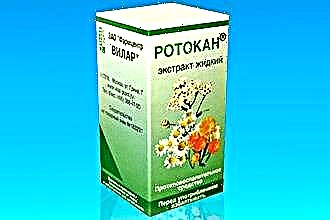
- Tonsilgon N;
- "Malavit";
- "Cromohexal";
- Dexamethasone.
Important! Inhalation should not be given to patients suffering from bronchial obstruction.
According to experts, it is undesirable to resort to aerosol inhalations with a strong narrowing of the bronchial lumen. Filling the airways with fluid can worsen respiratory distress and cause hypoxia.
Irrigation of the nose with moisturizing drops
If the nasal mucosa constantly itches, this indicates that irritants are still inside the respiratory tract. To speed up their evacuation, moisturizing drops can be instilled into the nasal passages. They stimulate the thinning and excretion of mucus, along with which allergens, dust and some infectious agents are removed from the nasopharynx.
For irrigation of the nasal passages, the following are usually used:
- Aqua Maris;
- "No-Salt";
- Dolphin;
- Physiomer;
- "Sodium chloride".
These drugs not only moisturize the mucous membrane, but also stimulate an increase in local immunity. If nasopharyngeal inflammation is caused by an infection, moisturizing drops can help eliminate the infection and swelling in the nasal passages.
Rinsing the nasal cavity with solutions
Washing is the most effective method of cleansing the nasal passages and sinuses from irritating substances. It is better to use isotonic solutions as drugs for nasopharyngeal irrigation. They disinfect the mucous membrane and increase the vascular tone, which helps to eliminate the symptoms of vasomotor and infectious rhinitis:
- "Marimer";
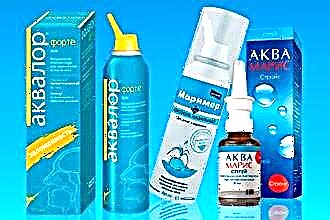
- Humer;
- "Aqualor".
It is impossible to use rubber pears for rinsing, since the introduction of liquid under high pressure is fraught with the penetration of saline into the frontal sinuses.
To avoid complications, it is best to use special irrigators or neti sweats to irrigate the mucous membrane. Water from the devices flows out under the pressure of its own weight, which prevents its penetration into the maxillary sinuses.
Allergy treatment
It is possible to stop the manifestations of an allergic rhinitis in the case of the use of antihistamines. They prevent the release of inflammatory mediators from mast cells, thereby reducing the severity of inflammation in the tissues. To quickly eliminate sneezing and itching in the nose, it is recommended to use two types of drugs:
- systemic antihistamines ("Kestin", "Zirtek", "Cetrin") - reduce the sensitivity of histamine receptors, relieve swelling and inflammation in the nasopharynx;
- local antiallergic drugs ("Levokabastin", "Allergodil", "Nazaval") - form a protective film on the surface of the nasal mucosa, impervious to allergens.
Local preparations are recommended for people suffering from seasonal allergic rhinitis and hay fever. Their use prevents itching, sneezing and runny nose even when allergens get on the nasal mucosa.
ARI treatment
In the case of an infectious lesion of the nasopharynx, discomfort in the nasal passages can be stopped by taking drugs of etiotropic action.  They suppress the activity of pathogens in the tissues, thereby eliminating inflammation and, accordingly, itching and sneezing. Typically, the following types of drugs are included in the treatment regimen for infectious rhinitis:
They suppress the activity of pathogens in the tissues, thereby eliminating inflammation and, accordingly, itching and sneezing. Typically, the following types of drugs are included in the treatment regimen for infectious rhinitis:
- antiviral drugs ("Grippferon", "Arbidol", "Anaferon") - reduce the number of viruses in the lesions and stimulate tissue regeneration;
- antibiotics ("Ceftriaxone", "Bioparox", "Augmentin") - destroy bacteria and prevent the development of purulent inflammation;
- antiseptic agents ("Protargol", "Chlorophyllipt", "Chlorhexidine") - disinfect mucous membranes and increase local immunity.
Irrational use of hormonal agents is fraught with a violation of the microflora in the ENT organs and the development of candidiasis.
In case of severe inflammation of the nasopharynx and paranasal sinuses, it is recommended to use nasal agents with corticosteroids - "Beconase", "Nazaren", "Pulmicort", etc. They interfere with the synthesis of inflammatory mediators, thereby reducing swelling and discomfort in the mucous membrane.
Outcomes
Sneezing and itching in the nose are precursors of inflammation in the nasopharynx. Not only infectious agents, but also allergens can provoke irritation of the nerve endings in the mucous membrane. Treatment methods for allergic and infectious rhinitis are fundamentally different. In the first case, antihistamines must be included in the therapy regimen, in the second - antiviral or antibacterial drugs.
To remove irritating substances from the nasal passages, it is recommended to resort to physiotherapy. To cleanse the mucous membrane of allergens and pathogens, you can resort to sanitizing procedures, instilling moisturizing drops into the nose and inhalation. Timely and adequate treatment of inflammatory processes in the respiratory tract helps to reduce the sensitivity of receptors and, accordingly, eliminate discomfort.



